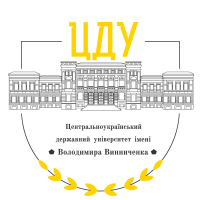ANIMATED MOVIES IN TEACHING FOREIGN LANGUAGES
Keywords:
foreign language teaching, Russian as a foreign language, motivation, animated movies, communicative competences.Abstract
This paper deals with the methodology of teaching foreign languages, in particular Russian as a foreign one. The article presents an analysis of animated movies as one of the ways to motivate students to increase their speech activity and to form their communicative competence. The author learns an animation as an educational material in foreign languages teaching practice. As well the paper focuses on a linguo-methodological potential of animation and on variants of motivational exercises based on the animated movies material. The animated movies value in foreign languages teaching practice lies in the fact that the material is authentic and not made for educational goals initially; combines visual and auditory information; is a source for familiarity with culturally specific vocabulary; provides a wide range of opportunities for mastering grammatical constructions, different intentions and communicative strategies; develops listening and speaking, as well as reading and writing skills through the use of motivational exercises. Effectiveness of using such animated materials in teaching foreign languages and achievement of learning results, first of all, depends on coherent compliance of the principles selection. The main requirements are conformity of the proposed material to the level of language proficiency, a possibility to develop communicative skills, socio-cultural context. Precedence, ethical value and humorous component of a text are important as well. Based on the material of animations the author suggests such motivational tasks: predicting from a name or a picture, animated movie dubbing, staging of separate episodes, imagining life of characters, interviewing characters, retelling on behalf of each character, story-telling based on the pictures or screenshots of the animated movies, creating memes, blogging on behalf of a character, making a local map and giving a tour, making a quote book, quest based on an animated movie, various discussions and other role plays.
References
Азимов Э. Г., Щукин А. Н. Новый словарь методических терминов и понятий (теория и практика обучения языкам). Москва : ИКАР, 2009.– 448с.
Барышникова Е. Н., Денисова А. А. Чебурашка и его друзья: пособие по развитию речи с использованием мультфильмов. Москва : РУДН, 2006. – 71с.
Лебедева М. Ю., Труханова Д. С. 7 способов мотивировать студентов на онлайн-занятиях: мемы и даже косплеи. URL : https://mel.fm/layfkhaki/8457023-online_motivation?bx_sender_conversion_ id=3083558 (дата звернення: 28.12.2020).
Лингвострановедческий словарь «Россия». URL : http: https://ls.pushkininstitute.ru/lsslovar/index.php (дата звернення: 15.01.2021).
Салахова А. Р. Лингводидактический потенциал советской анимации на уроках русского языка как иностранного. Филология и культура. 2016. №1(43). – С. 314-319.
Cамусенко О. M. Українські мультфільми як навчальний матеріал у курсі лінгвокраїнознавства. UCRAINICA VII. Současná ukrajinistika. Problémy jazyka, literatury a kultury: sbornik přispĕvků z mezinárodní ĸonference VIII Olomoucké symposium ukrajinistů střednía východní Evropy. Olomouc, 2016. – C. 611-617.
Самусенко О. М. Основні принципи створення лінгвокраїнознавчого словника української мови для іноземців. Вісник Запорізького національного університету. Філологічні науки. Запоріжжя, 2020. №1. Ч.II. – С. 13- 20.
Швець Г. Д. Теорія і практика навчання української мови іноземних студентів гуманітарних спеціальностей : монографія. Київ : Фенікс, 2019. – 529с.
Эпштейн А. Л. Едем в Простоквашино: учебное пособие по развитию речи на основе мультипликационного фильма. Москва : Русский язык. Курсы. 2015. – 96с.
Юзвяк І. П. Мультфільми на уроках з української мови як іноземної. Теорія і практика викладання української мови як іноземної. Львів, 2012. Вип. 7. – C. 76-83.








